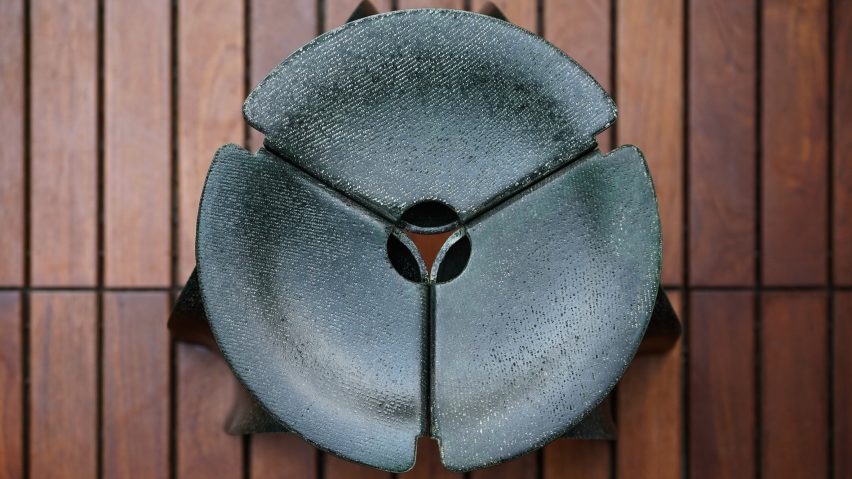
Studio RYTE's biodegradable Triplex stool is made from flax fibre mixed with bioplastic
Hong Kong's Studio RYTE has developed a modular seating design made from flax fibre that can be broken down into three stackable segments for easy transport and storage.
In this way, the designers hope to encourage users to take the Triplex stool with them wherever they move, rather than adding it to the mountain of 22 million furniture pieces that are discarded every year in the UK alone.
When the stool is no longer needed, the flax fibres, as well as the polylactic acid (PLA) that binds them together, will fully biodegrade.
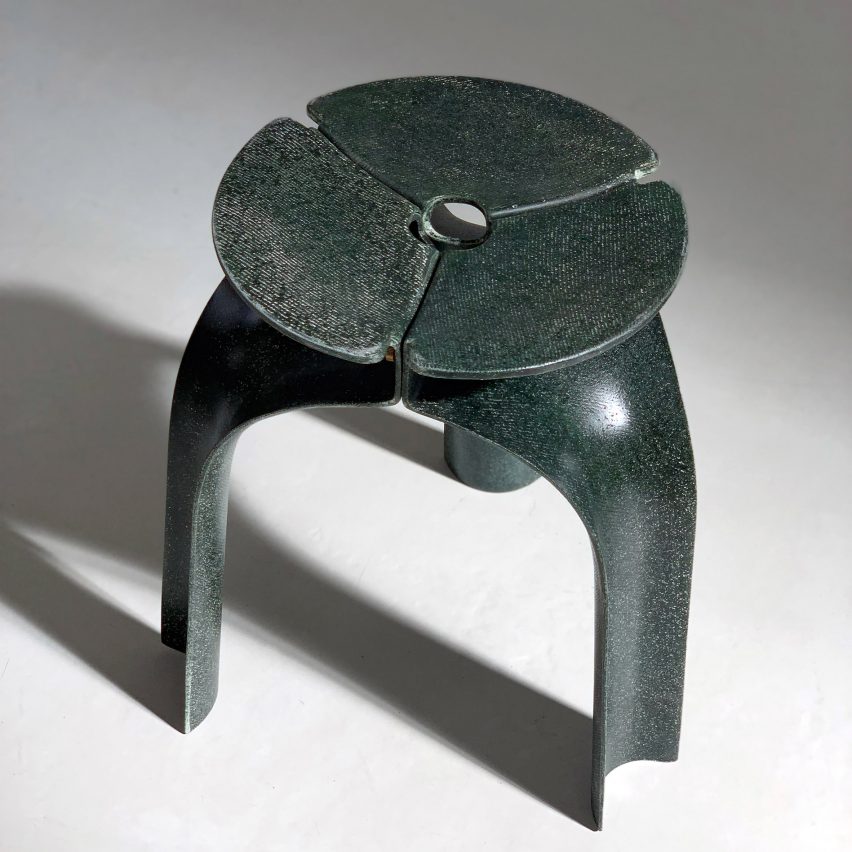
"We are still experimenting and improving the material, but at the moment it would take three to six months in a controlled environment for the stool to start decomposing," said Studio RYTE founder Dennis Cheung.
"We foresee the stool being used by its owner in city after city, generation after generation. But when it finally comes to the end of its life, the product can disappear responsibly."
The Triplex stool has been shortlisted for this year's Dezeen Award in the seating design category.
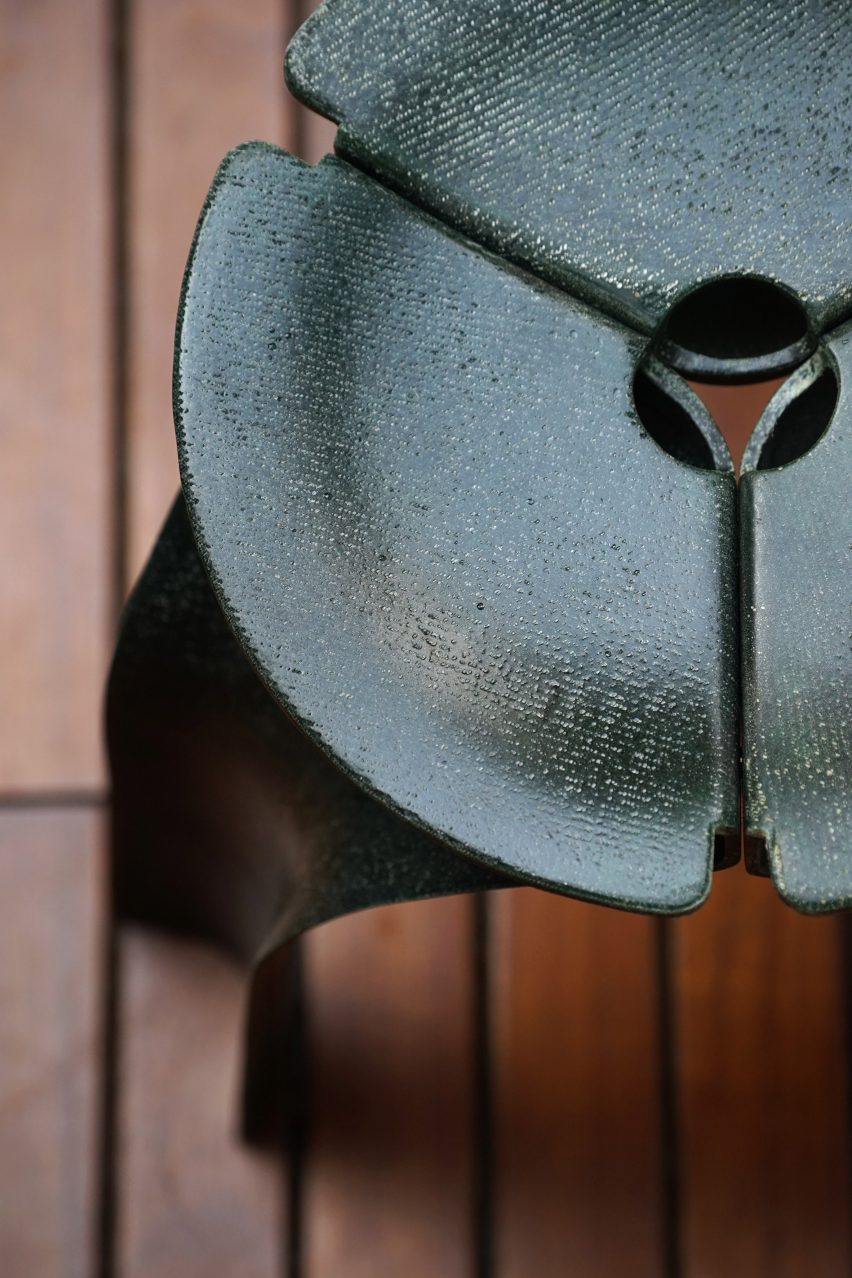
Flax fibre, its predominant ingredient, is derived from the stem of the flax plant and commonly used to make linen.
But in this case the cellulose polymer is used for its natural strength, which, according to Cheung, rivals the performance of carbon fibre.
"Flax fibre itself has a high tensile strength and Young's modulus [elasticity]. It is, therefore, a light and strong material if used correctly," he said.
"The final prototypes were made using flax fibre and PLA, layered together in aluminium moulds."
PLA is the most common type of bioplastic and in this case is made from fermented starch extracted from the corn plant.
The stool is put together from three identical modules, each encompassing one leg and a third of the seat surface, which can be stacked on top of each other for transport and assembled using custom-made nuts and bolts.
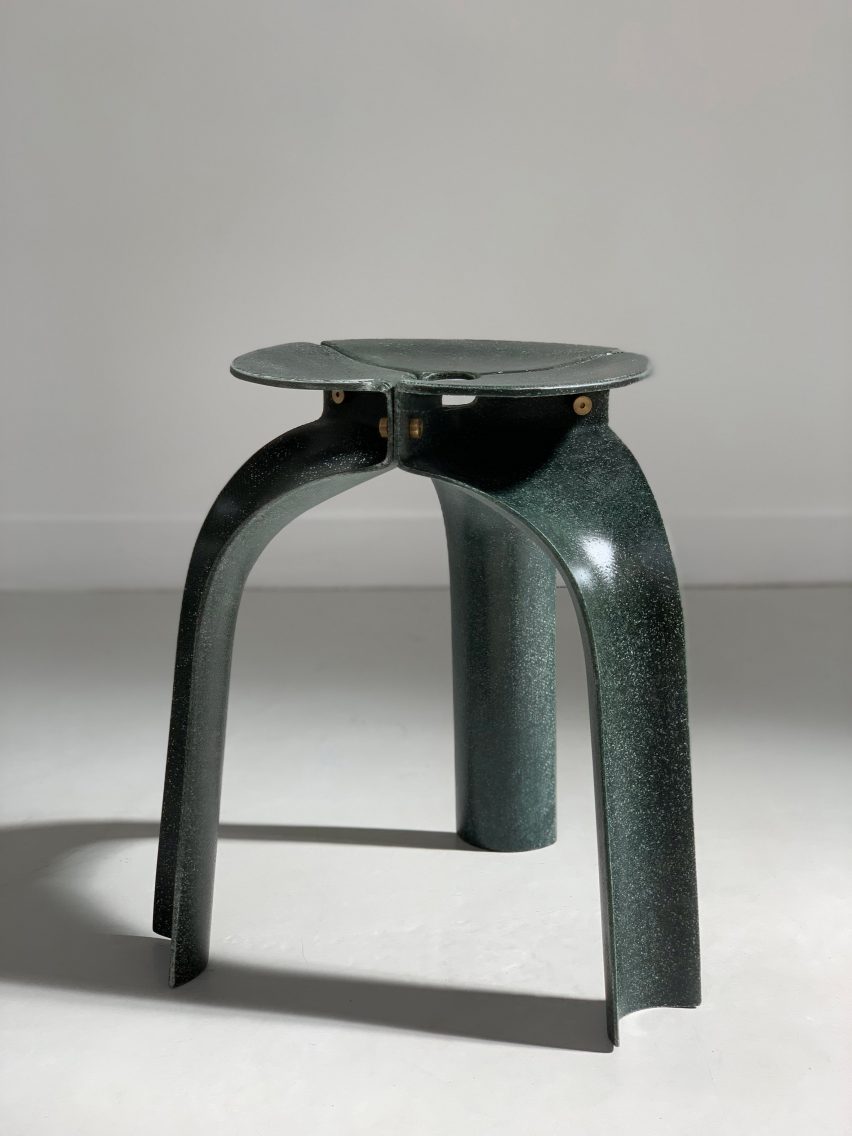
"When disassembled and stacked together, the size of the stool is minimised, making it easy to carry and ship with a lower carbon footprint," said Cheung.
"We have been bringing the prototype to different exhibitions in Paris and Cologne in our hand luggage and it only takes up half the size of the bag."
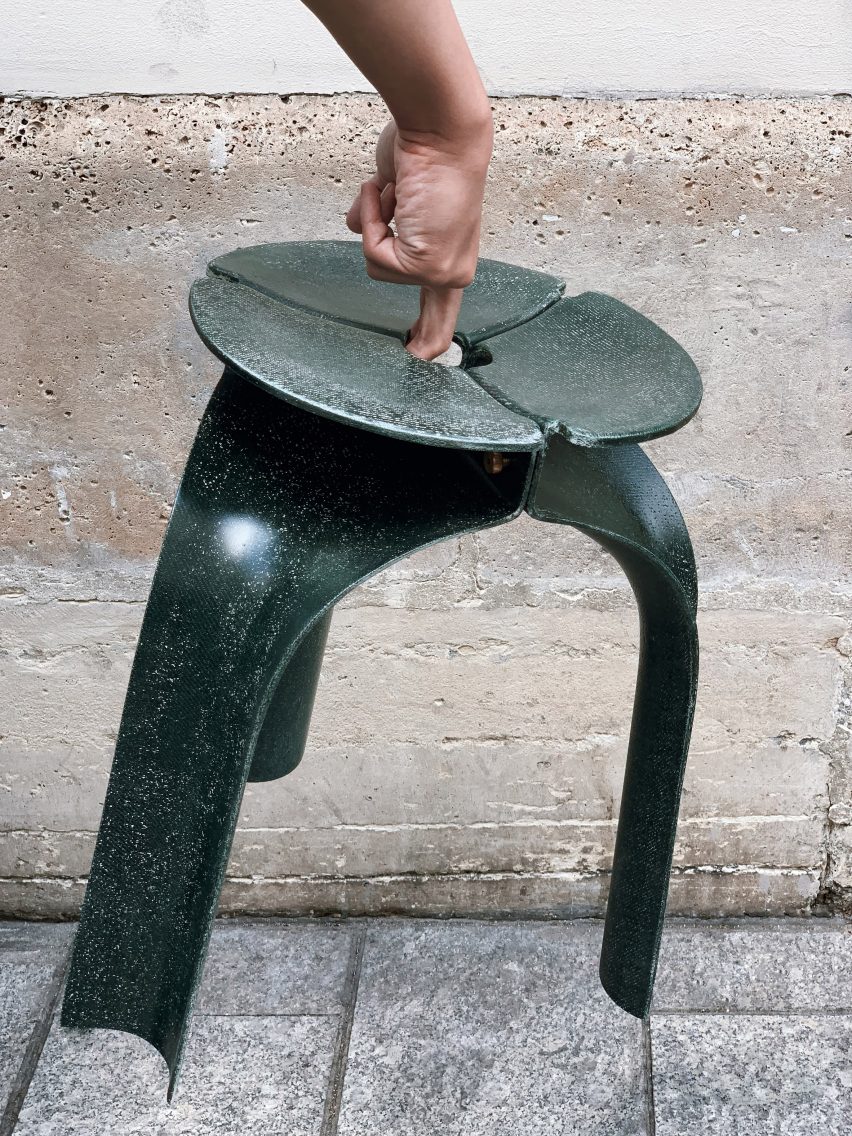
The modules are light and only three millimetres thick, meaning the stool derives its stability not from the material but from its strategically curved geometry.
This was optimised through a variety of digital and analogue models and simulations, much like the ones that are used to design more complex feats of engineering, such as car shells.
"With the aid of structural analysis, stress simulation and digital fabrication, we modelled how the curvature of the legs could bring structural strength to support weight," he said.
"Collaborating with engineers and craftsmen who previously worked for Porsche and Mercedes Benz, we translated the techniques of making carbon fibre car shells into flax fibre furniture."
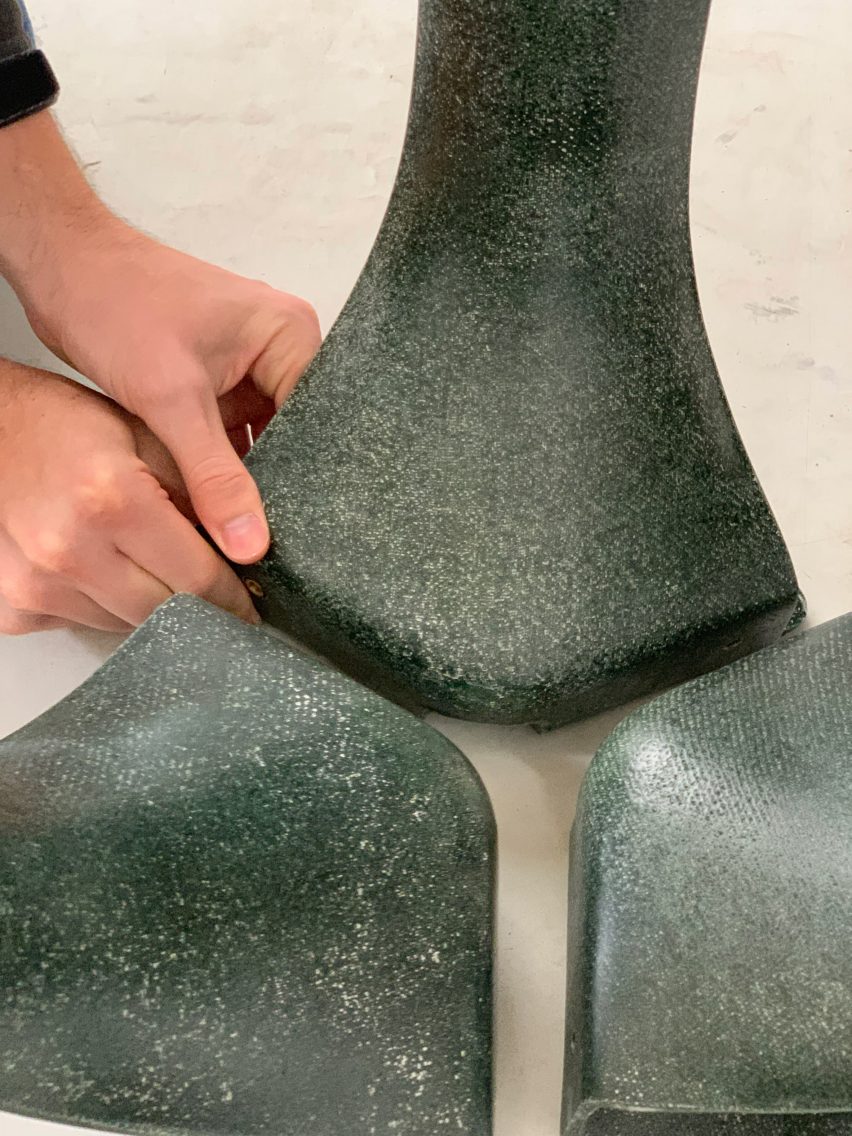
Studio RYTE is a multi-disciplinary design studio made up of architects, designers and engineers, which works across interior spatial design as well as creating products such as the modular feline furniture collection Catssup.
Other designs that have been nominated in the seating design category at the Dezeen Awards this year include the On & On chair by Barber & Osgerby for Emeco, which can be endlessly recycled, and the flat-packed, moulded plywood Soft Lounge Chair created for Takt by Thomas Bentzen.